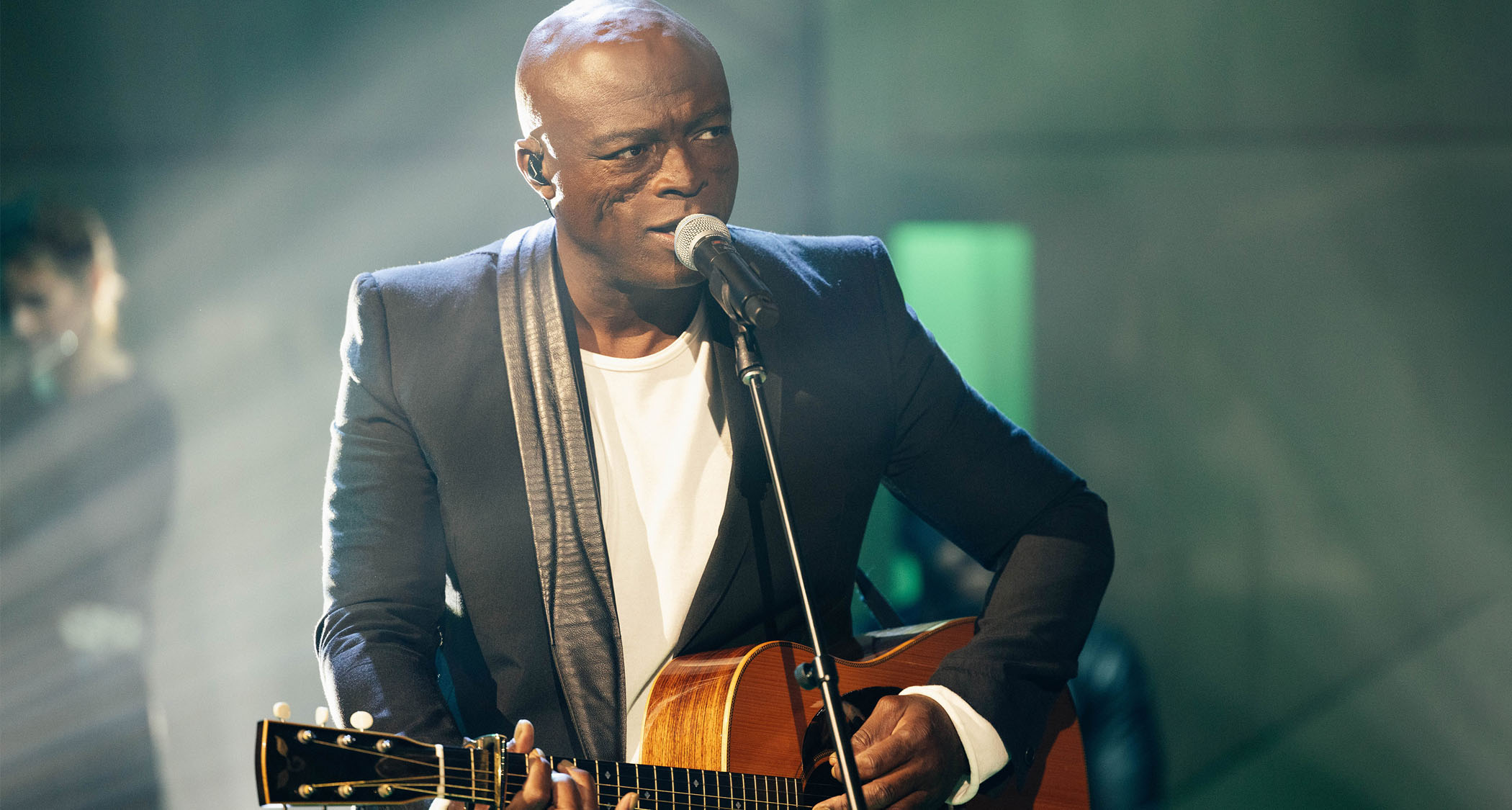“A girlfriend bought me a Portastudio because she said I was wasting my time trying to be a fashion designer… she bullied me into committing to music”: Seal on how a Tascam four-track and two chords changed his life as he found his identity on guitar
The singer-songwriter says when he got his four-track and picked up the guitar, he found his voice as an artist

For a time Seal wasn’t so sure about what he was going to do with his life. He was passionate about music but lacked direction. He had a voice but no identity. Enter the Tascam Portastudio, and with the help of an acoustic guitar, everything changed.
In a recent YouTube interview with Reverb, Seal says he was caught in two minds as to where his career was headed. But a gift – and some pointed advice – from a girlfriend made his mind up for him.
“A girlfriend bought me a Portastudio because she said I was wasting my time trying to be a fashion designer,” he says. “She told me that I should be writing music, and that I should get on with it. So she bullied me into committing to music. She was right.”
Seal was a prolific writer from the get-go. The problem was that his songs were stylistically all over the map. They didn’t sound like him. His writing was all guided by his voice.
“The voice is such a unbridled instrument,” he says. “It can be difficult to define a sound or have a consistency from one song to the next.”
He needed a sense of ballast, and that’s where the guitar came in. Seal says it grounded him, and it would help him “cultivate” an identity – not that he could play in the beginning. Not that it mattered. He managed to put Kiss From A Rose down on tape, layering it on his Tascam four-track.
“One of the first decent songs I wrote before I could play anything was Kiss From A Rose, and I wrote that from the voice, and that was basically me trying to emulate what an orchestra would do,” he explains. “All of those bits, they’re all string parts, or orchestral parts, and it’s me trying to imitate what an orchestra would do.
Want all the hottest music and gear news, reviews, deals, features and more, direct to your inbox? Sign up here.
For the first time, I’d written a song that sounded like me, and it didn’t sound like anyone else, and I attribute that to the guitar
“I remember I got a four-track, a Tascam 244. I was trying to figure out how to multi-track on a cassette tape, so that’s why I came up with all of those parts.”
He had the four-track. History tells us that could be a powerful tool; Bruce Springsteen tracked Nebraska on a 144 (and that lacked the simultaneous four-channel recording, and the parametric EQ!). Seal had the acoustic guitar. But he had little knowledge of chords and scales. As it turned out, two shapes was all he needed.
“When I started to play an instrument, and in this case, the guitar, I learned the E shape and the A shape,” he recalls. “Somebody told me that with those two shapes, if you move them up and down the neck – you know, barre chords – you could pretty much play every chord that you would need to write a song.”
Those chords unlocked the door. The first song he wrote was Crazy. It’s true, the song was great. But more importantly he knew what he wanted to sound like. Back then, nobody wanted to sign him. The labels might have liked what they heard but they had no idea how to market him. Remarkably, Seal has some sympathy with the record labels’ position.
“It’s a valid concern if you're a record company,” he says. “You are a business. You’re like an investment company, and you’re looking for a return on your investment, and if you can’t see that, then you’re less likely to invest in it. And they couldn't invest in me, even though they kind of liked what they heard.”
At least now, in the rearview mirror, Seal has some sympathy for the suits. At the time, he thought they were “all deaf” and he might have a point. Not that it put him off.
“There was no question in my mind that this was once I’d committed, this was gonna be my my chosen path in life,” he says. “It wasn’t even gonna be what I was doing;
It was it was what I was, and so I couldn’t understand why they couldn’t hear what I was hearing.”
Crazy changed things. There was no pastiche in that. “For the first time, I’d written a song that sounded like me, and it didn’t sound like anyone else,” he says. “And I attribute that to the guitar, it allowing another or more of my identity to step forward.”
Jonathan Horsley has been writing about guitars and guitar culture since 2005, playing them since 1990, and regularly contributes to MusicRadar, Total Guitar and Guitar World. He uses Jazz III nylon picks, 10s during the week, 9s at the weekend, and shamefully still struggles with rhythm figure one of Van Halen’s Panama.
You must confirm your public display name before commenting
Please logout and then login again, you will then be prompted to enter your display name.
![Seal - Kiss From A Rose (Official Video) [HD] - YouTube](https://img.youtube.com/vi/hDd2G_V1rzc/maxresdefault.jpg)
![Seal - Crazy (Official Music Video) [HD] - YouTube](https://img.youtube.com/vi/4Fc67yQsPqQ/maxresdefault.jpg)

